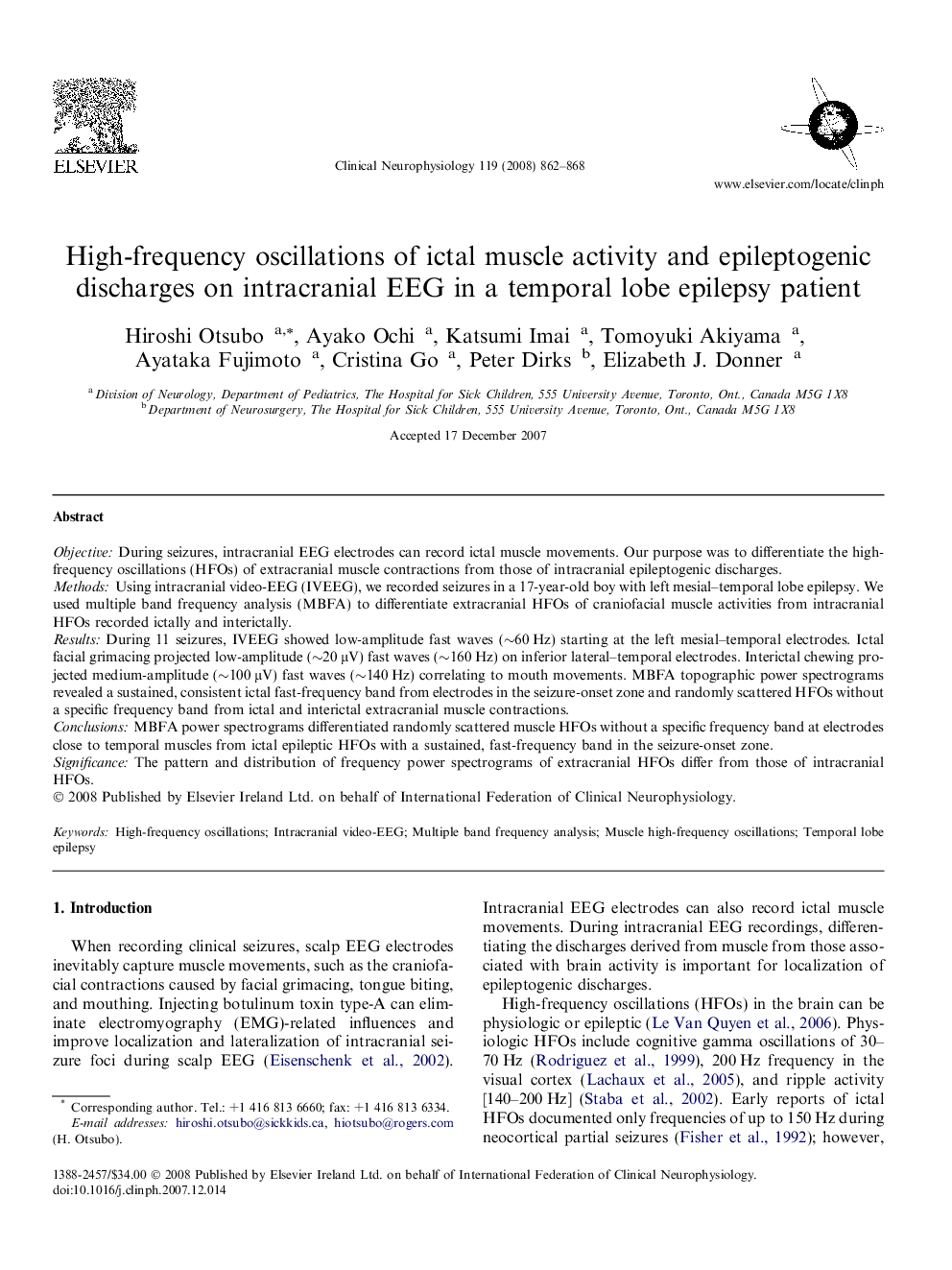| Article ID | Journal | Published Year | Pages | File Type |
|---|---|---|---|---|
| 3046500 | Clinical Neurophysiology | 2008 | 7 Pages |
ObjectiveDuring seizures, intracranial EEG electrodes can record ictal muscle movements. Our purpose was to differentiate the high-frequency oscillations (HFOs) of extracranial muscle contractions from those of intracranial epileptogenic discharges.MethodsUsing intracranial video-EEG (IVEEG), we recorded seizures in a 17-year-old boy with left mesial–temporal lobe epilepsy. We used multiple band frequency analysis (MBFA) to differentiate extracranial HFOs of craniofacial muscle activities from intracranial HFOs recorded ictally and interictally.ResultsDuring 11 seizures, IVEEG showed low-amplitude fast waves (∼60 Hz) starting at the left mesial–temporal electrodes. Ictal facial grimacing projected low-amplitude (∼20 μV) fast waves (∼160 Hz) on inferior lateral–temporal electrodes. Interictal chewing projected medium-amplitude (∼100 μV) fast waves (∼140 Hz) correlating to mouth movements. MBFA topographic power spectrograms revealed a sustained, consistent ictal fast-frequency band from electrodes in the seizure-onset zone and randomly scattered HFOs without a specific frequency band from ictal and interictal extracranial muscle contractions.ConclusionsMBFA power spectrograms differentiated randomly scattered muscle HFOs without a specific frequency band at electrodes close to temporal muscles from ictal epileptic HFOs with a sustained, fast-frequency band in the seizure-onset zone.SignificanceThe pattern and distribution of frequency power spectrograms of extracranial HFOs differ from those of intracranial HFOs.
